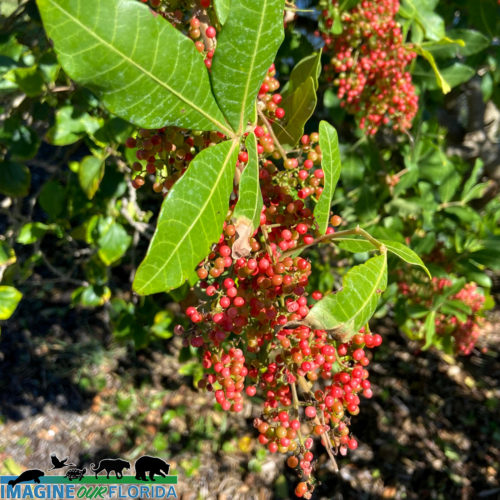The Brazillian peppertree, Schinus terebinthifolia, is one of the most invasive plants in Florida. Native to Brazil, Paraguay, and Argentina, this aggressive plant was introduced as an ornamental plant and now inhabits over 700,000 acres of terrestrial and aquatic habitats throughout the state. This small tree or evergreen shrub can grow to 30 feet tall and will shade out all other plants beneath its dense canopy. A variety of birds and mammals such as raccoons and opossums eat the berries and disperse the seed on the land and in waterways.
From September through November the peppertree blooms with 2-3 inch white flower clusters. Bright red berries appear in November. Floridians once called this plant the Florida Holly and used its branches for Christmas decorations. Brazillian peppertree is a member of the Anacardiaceae family which includes poison ivy and poison sumac. Human skin may be sensitive to the plant and some folks may experience respiratory issues. It has been declared a Class I -“Prohibited Aquatic Plant” by the Florida Department of Environmental Protection.
Control methods include mechanical removal, chemical treatment, and biological treatment which includes two insects – Brazilian peppertree thrips, Pseudophilothrips ichini, and Yellow Brazilian peppertree leaf gallers, Calophya latiforceps.


 lian
lian


